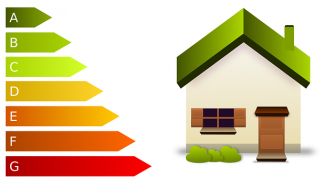 Excessively cold homes in England alone could be costing the NHS £540m a year in preventable costs, according to the Building Research Establishment (BRE) – and the organisation says many of those homes are in the private rented sector.
Excessively cold homes in England alone could be costing the NHS £540m a year in preventable costs, according to the Building Research Establishment (BRE) – and the organisation says many of those homes are in the private rented sector.
BRE’s analysis of the latest English Housing Survey data found there are 700,000 homes that are officially assessed as excessively cold. This is most prevalent among properties that are owner occupied or privately rented – in fact, over half a million owner occupied properties and 200,000 privately rented homes fall into this category, according to BRE.
A comparatively small number – just over 20,000 – socially rented homes are excessively cold. The BRE attributes this to the long-running Decent Homes Standard regulations in the social housing sector.
The organisation believes the NHS bill to treat people impacted by excess cold of £540m per year could be mitigated if action was taken to improve the efficiency and quality of England’s housing stock, with a pay back of between eight and nine years.
Gillian Charlesworth, CEO of the BRE, commented: “Poorly insulated homes have an immediate impact on the health of the people who live in them, as well as being expensive to heat and a barrier to meeting our net zero ambitions.”
When broken down by tenure, the BRE estimated that it would cost, on average, £6,690 to remedy excess cold for an owner-occupied property and £6,835 per property in the private rented sector.
The BRE has called for a strategic retrofit programme to improve the quality of England’s housing stock and provide the financial incentives needed to drive standards up.
Charlesworth added: “It’s clear from our research that there are major benefits to be reaped from improving the efficiency of England’s homes, particularly as households are set to lose government support with record energy prices from April and public services face significant pressure. However, while progress is being made in this area with new funding being allocated to home insulation, we still have a long way to go.
“Strategic retrofit programmes are critical to improving the energy efficiency and safety of a property. We need to see a continued and targeted effort to improve England’s poorest homes, for the benefit of individuals, society and our public infrastructure.”


Maybe I am paranoid as I see this article as another dig at the PRS. The title “BRE highlights ‘excessively cold’ homes in private rented sector” implies all the cold the homes are in the PRS. This is not true as the article goes on to say “in fact, over half a million owner occupied properties and 200,000 privately rented homes fall into this category The numbers quoted seem high but in fact in percentage terms are rather low. Half a million owner occupied homes is about 2% of the total and 200,000 PRS homes is about 4.4% of the total.
Insulation is not a factor as statistics show that currently the PRS and owner occupied sectors are neck and neck in terms of EPC rating with 39.2% of owner occupied property rated as C while in the PRS it is 39.4%. The greatest percentages are in the D category with 46.4% for owner occupiers and 44.3% for the PRS.
So what it boils down to is affordability. Houses are cold because generally the occupants can’t afford to run the heating. Upgrading from a D rating to a C rating will only save a few hundred pounds a year and will come at a cost of nearly £7,000 according to BRE. Even if you can save £500 year it will still take 14 years to break even. This why owner occupiers will not be rushing to upgrade. If a landlord is forced to lay out £7,000 it is of no advantage to them at all as it is the tenants who will get the slight benefit but not if the landlord puts the rent up by £30 week to finance the upgrade.
You must be logged in to like or dislike this comments.
Click to login
Don't have an account? Click here to register